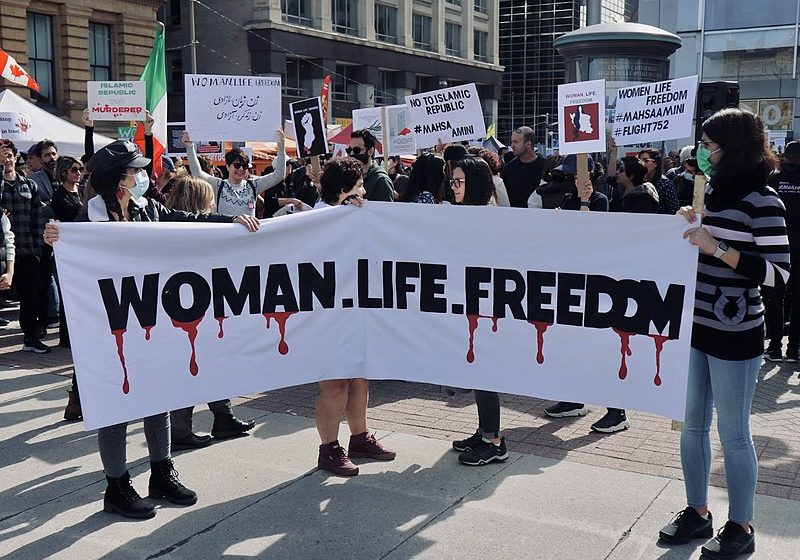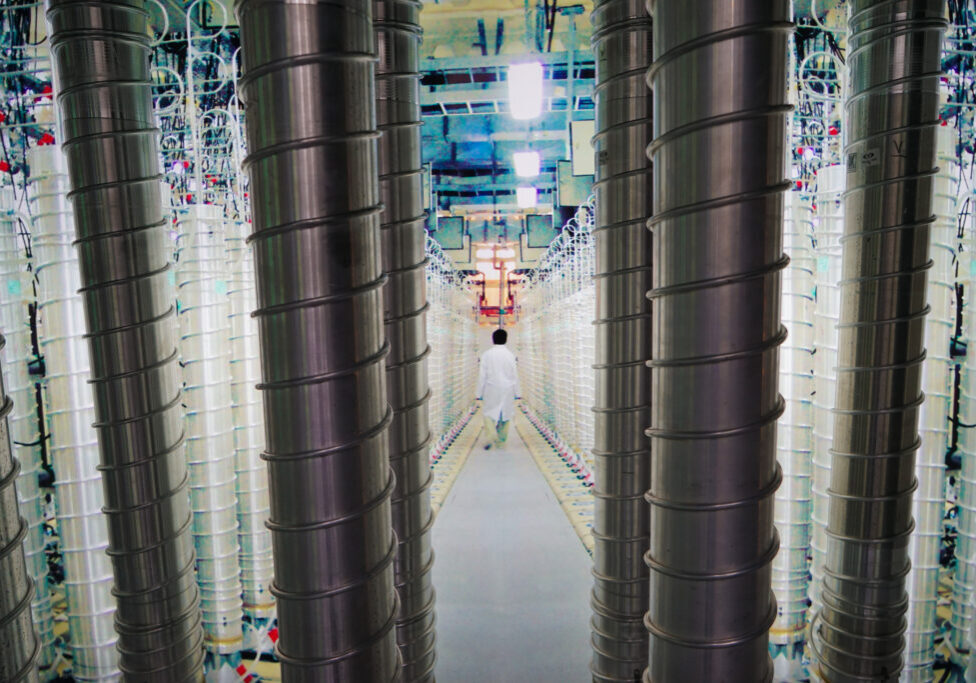Australia/Israel Review
Oil Shock
Sep 26, 2019 | Michael Knights

Refinery attack a test of US credibility and Iran deterrence
The September 14 attack on Saudi targets in Abqaiq and Khurais – one of the world’s largest oil refinery complexes and Saudi Arabia’s third-largest oil field, respectively – could take up to 5.7 million barrels per day off the global market for the next several months. This makes it the most comprehensive blow against the global energy sector since Iraq’s seizure of Kuwait in 1990 and the subsequent destruction of both countries’ energy infrastructures. Now, as then, US and international commitment to the security of global energy supplies is being tested.
ANATOMY OF THE ATTACK
The strike was highly effective from a military perspective. The weapons hit at around 4am local time and appear to have struck from a northerly or north-westerly direction. This fits with a string of reporting that suggests related air defence alerts and engine sounds were concentrated in areas of the northern Persian Gulf, as opposed to an ingress route from Yemen. Strong US Government statements have ruled out Yemen (on Sept. 14) and Iraq (on Sept. 16), so the focus is narrowing to a direct strike originating from Iran.
These factors – plus the lack of attempted air defence interception by numerous overlapping Hawk and Patriot missile batteries – suggest a low-level cruise missile attack that hugged the ground at altitudes of less than 90 metres. The footage seen thus far shows only one crashed missile, indicating that the arrival rate was very high, possibly even 95%, and that routes were carefully planned to avoid obstacles such as power lines and communication towers.
Seventeen individual impact points were struck at the Abqaiq facility, with a smaller number (perhaps as low as two) at Khurais. The weapons were highly accurate – for instance, all 12 of the 30-metre-wide spheroid gas-oil separation tanks at Abqaiq were hit almost dead centre. Much thinner stabilisation towers were also accurately struck.
There are even indications of finesse in the strike’s “weaponeering,” the technical term for munition selection and modification. Some “aimpoints” were clearly hit with large explosive payloads consistent with an Iranian cruise missile such as the 700-kilometre-range Ya-Ali. Yet the gas-oil separation tanks appear to have been struck with high-velocity kinetic force without explosions, perhaps signalling an effort to damage but not permanently destroy them. Similar finesse was visible in Iran’s May 12 attacks in the Fujairah anchorage off the United Arab Emirates, where four ships had their hulls expertly holed without causing the vessels to spill oil, sink, or suffer massive fires.
The full level of damage inflicted is unknown so far, but considering the range of facilities struck and the long lead times for manufacturing such specialised equipment, the impact on Saudi oil processing capacity could extend into the four-, six-, or even 12-month timeframe, forcing the kingdom to discontinue offering Arab Light and Arab Super Light grades. This extraordinary outcome would deeply shock oil markets and the Saudi leadership alike. And from a military perspective, no energy sector has been struck so effectively since the US coalition’s precision bombing of Iraq in 1991.
SURMISING IRAN’S GOALS
Teheran’s intentions are always difficult to read given the wide spectrum of players within its security and diplomatic establishment. Assuming, however, that early indications of a major cruise missile attack launched from Iranian territory prove correct, the strike is a very bold gamble by the country’s leadership.
Iran can count on public scepticism to afford it some deniability under any circumstances, but an attack of this magnitude stands a much greater chance of provoking very severe diplomatic and military consequences. If significant portions of the intelligence community conclude that the world’s most important energy site has been hit by unprecedentedly advanced weapons launched directly from Iran or by the regime’s proxies, the finding would challenge not only Riyadh and Washington, but the entire global energy community, including China.
One possibility is that Iranian security officials have decided they can keep testing US and Saudi resolve without major consequences, perhaps with the goal of shaking or shattering both their trust in each other and their determination to confront Teheran. After all, the regime’s gradually escalating thrusts have all been issued with no real riposte, from the May 12 Fujairah attacks, to the May 14 attack on Saudi Arabia’s East-West Pipeline, the June 14 daylight attack on two tankers in the Strait of Hormuz, and the June 20 shootdown of a US drone. More immediately, Teheran may aim to compel the West into granting it sanctions relief in exchange for reducing such attacks and freezing its recent acceleration of nuclear activities. If so, it may believe that Abqaiq will merely strengthen its leverage rather than changing the game altogether.
THE NEED FOR MEANINGFUL CONSEQUENCES
Even if Iran is uninterested in direct talks with the United States at the moment, it does seem keen on obtaining sanctions relief and a credit line in the near term, so it may be susceptible to a diplomatic full-court press. Another justification for substantial international action lies in the scope of the latest attack – Iran has deliberately gone much further than its previous provocations, and if it avoids consequences once again, it may decide it has a free pass to go even further, whether against Saudi Arabia, Israel, or other US partners.
And on the wider geopolitical front, other known global provocateurs will be watching how Washington responds, including Russia (with an eye to Ukraine and election processes around the world), China (thinking of Taiwan), and North Korea (looking at US resolve on weapons testing and other security issues).
For the sake of re-establishing deterrence, the attack must not go unanswered or unrecognised. At the same time, Washington should view it as an opportunity to improve the narrative on US Iran policy. If, as seems likely, neither the United States nor Saudi Arabia wishes to take prompt military action (e.g., an equivalent strike on Iran’s Kharg Island export facilities), there are other ways of signalling firm consequences in the short term while preserving the option for future military action:

A Saudi briefing detailed the Iranian hardware collected from the attack site
Prove the link to Iran. Washington and Riyadh must first quickly reveal any clear evidence they have that the latest strike came from Iran, especially launch data and weapons intelligence. This evidence should first be shared among a subset of UN member states (Britain, France, Germany, and other NATO/G-20 nations), then openly released when internal consensus has been reached. According to some reports, the UN Panel of Experts may be tasked with reviewing this weapons intelligence; if so, US and Saudi officials should be ready to share relevant data more openly and rapidly than ever, while the UN should plan to reach a decision in weeks, not months. Furthermore, UN Security Council members should commit to treating this review as authoritative, in contrast to previous panels of experts findings on Iranian arms smuggling, which did not inform subsequent positions issued by the UN Secretary-General.
Build coalitions. Although some US politicians support the argument that Saudi Arabia deserved this strike for its actions in Yemen, Washington has every reason – strategically and morally – to work with other partners in showing a united face against this military attack on a UN member state and a key energy producer. For its part, Riyadh should be encouraged to call in every favour so that Iran gets hit with a barrage of condemnation through bilateral diplomatic statements and UN action. Iran’s shocking overreach at Abqaiq is an opportunity to lessen Washington and Riyadh’s current diplomatic isolation, and the late September UN General Assembly meetings should be an ideal venue for such efforts. If China can be brought onboard by Saudi entreaties, it will be Russia that finds itself isolated on Iran issues. Whatever coalition forms in this regard, France should act as its spokesman.
Issue diplomatic censure with teeth. The Saudis should be encouraged to use their leverage with Russia and China to push for an emergency session of the UN Security Council, and to ensure the meeting produces a resolution that not only condemns Iran’s behaviour, but also takes further measures to tighten international policing of sanctions on Iran. These measures should target the regime’s arms smuggling activities and missile development programs, and include a follow-on mechanism for banning Iranian arms sales once Security Council Resolution 2231 expires in 2021. The United States could also give more space for European initiatives on energy and maritime security in the Gulf, as well as open working groups focused on expanding the Joint Comprehensive Plan of Action to include all aspects of Iran’s regional activities.
Take covert action that secures US interests and allies. Iran and its proxies have numerous facilities and personnel across the region that pose a threat to US interests and the security of US partners, including Israel. Now may be the time to act more forcefully against some of those assets in order to show Iran’s hardliners that their Gulf provocations will be met with direct negative effects. This response could include a robust covert action program involving rapid cyber retaliation, financial intelligence, sabotage, and kinetic activities.
Plan collective defence measures. The Abqaiq strike is a humiliating failure for Saudi Arabia’s air defence system. Many of the components needed to defend against a cruise missile swarm are in place – radars, missiles batteries, and anti-aircraft cannon – but they were evidently not alert enough or not handled boldly enough to parry this blow. The United States and other partners should therefore provide Riyadh with emergency hands-on air defence consultation, focusing on practical, near-term measures that can make the kingdom more resistant to cruise missile attacks. These include rapid operation management of the defence systems in question, more intelligence sharing, confidence-building efforts that focus on the safe operation of near-automated air defence close to key infrastructure and cities, plus some symbolic reinforcement with missile batteries and air defence ships from the United States and other partners. Finally, the Trump Administration and Congress should expedite upgrades that bring Saudi Patriot systems in line with the PAC-3 standard, and offer to fast-track the sale of defence batteries designed in part to counter precision-guided munitions, such as the Avenger and Phalanx/Centurion close-in systems.
Michael Knights, a senior fellow with The Washington Institute for Near East Policy, has worked on Gulf military affairs and deterrence dynamics for over 20 years. © Washington Institute (www.washingtoninstitute.org), reprinted by permission, all rights reserved.
Tags: Iran, Persian Gulf, Saudi Arabia






